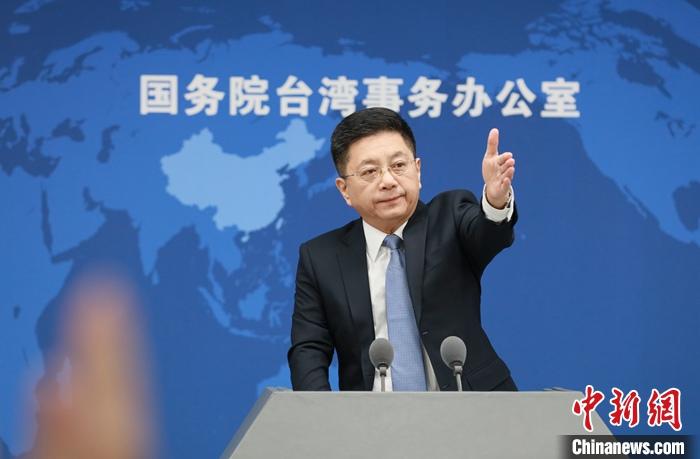China News Service, June 15. Ma Xiaoguang, a spokesman for the Taiwan Affairs Office of the State Council, said on the 15th that facts have proved that if the "1992 Consensus" is adhered to, cross-strait relations can be improved and developed;
As long as the DPP authorities stop provocation of "independence", adhere to the "1992 Consensus", and agree with its core meaning, the deadlock between the two sides of the strait can be easily resolved, and dialogue and exchanges between the two sides of the strait will not be a problem.
Data map: Ma Xiaoguang, spokesman for the Taiwan Affairs Office of the State Council.
Photo by China News Agency reporter Yang Kejia
On the 15th, the Taiwan Affairs Office of the State Council held a regular press conference.
A reporter asked: This year marks the 30th anniversary of the "1992 Consensus". The "1992 Consensus" has played an important role in the development of cross-strait relations. However, the cross-strait relations and the international situation have changed in the past 30 years. Will the mainland consider seeking cooperation with Taiwan? A new "consensus" that is more suitable for solving the current deadlock between the two sides of the Taiwan Strait?
In this regard, Ma Xiaoguang said that no matter how the international situation changes, and how the mainland and Taiwan develop and change within each other, the fact that the two sides of the strait belong to one China cannot be changed and will not change; the nature of cross-strait relations has not changed and cannot be changed.
"I am a witness to the '92 Consensus', and I would like to make a brief review with you here."
Ma Xiaoguang said that the "1992 Consensus" was a consensus reached by the ARATS and the Taiwan SEF through Hong Kong talks in 1992 and their subsequent correspondence and telegrams, and reached a consensus on verbally stating "both sides of the Taiwan Strait adhere to the one-China principle". It clearly stated the position and attitude of adhering to the one-China principle and pursuing national unity, in black and white.
The statement of Taiwan's SEF is: "In the process of joint efforts on both sides of the Taiwan Strait to seek national reunification, although both sides adhere to the one-China principle, they have different perceptions of the meaning of one-China." The statement of the ARATS is: "Both sides of the Taiwan Strait adhere to the one-China principle and strive to seek national reunification. However, the political implications of one-China are not involved in the cross-strait affairs talks." It can be seen from this that the common ground between the two sides is that they adhere to the one-China principle. The attitudes of the two countries all demonstrate the pursuit of cross-strait reunification.
The difference is that, regarding the political meaning of one China, Taiwan's SEF stated that it "has different perceptions", while the ARATS stated that "it is not involved in business discussions", and made a deal of seeking common ground while reserving differences.
This is the basic fact of the "1992 Consensus".
The "1992 Consensus" is not a noun, nor is it a game of words. It was reached through authorized negotiation by relevant parties on both sides of the strait. It reflects the historical fact and legal basis that both sides of the strait belong to the same China. It is the greatest common divisor for improving and developing cross-strait relations. distortion.
Facts have proved that if the "1992 Consensus" is adhered to, cross-strait relations will improve and develop;
From 2008 to 2016, the reason why cross-strait relations were able to develop peacefully was because the two sides established basic political mutual trust on the political basis of the "1992 Consensus".
Since 2016, the reason why cross-strait relations have continued to deteriorate is that the DPP authorities refused to recognize the "1992 Consensus" and unilaterally undermined the political foundation for the peaceful development of cross-strait relations.
The crux of the cross-strait relationship is very clear.
We have stated many times that as long as we stop provoking "independence", adhere to the "1992 Consensus", and agree with its core meaning, the deadlock between the two sides of the Taiwan Strait can be easily resolved, and dialogue and exchanges between the two sides of the Taiwan Strait will not be a problem.

